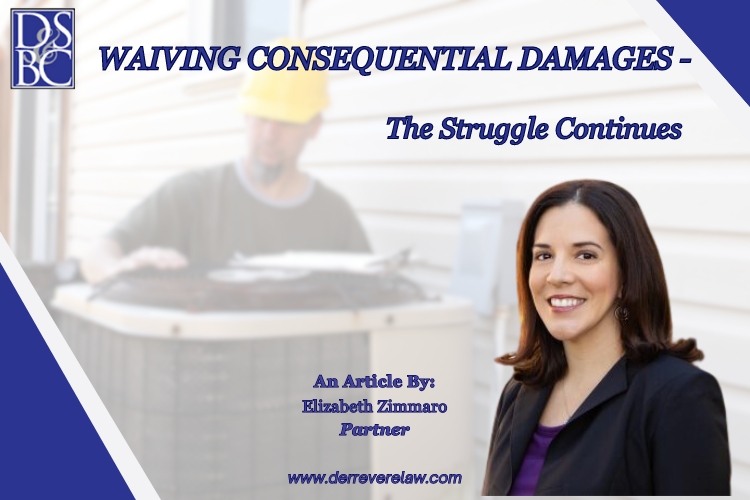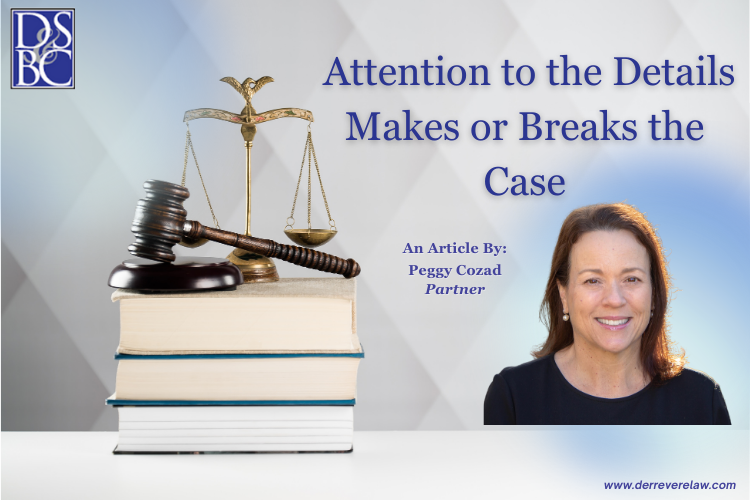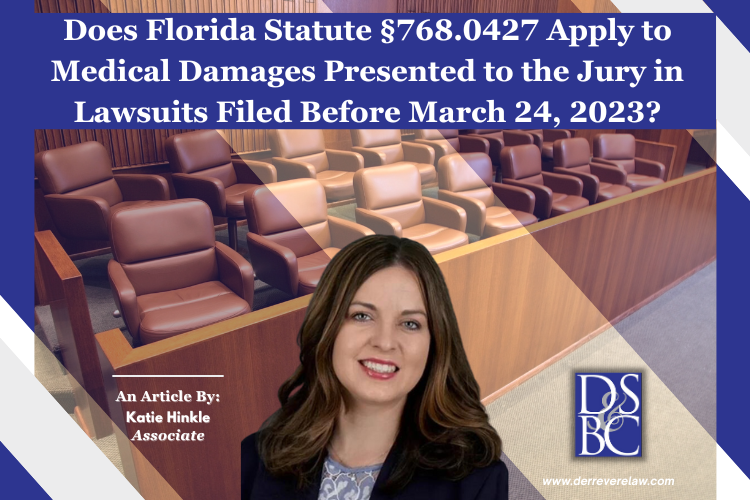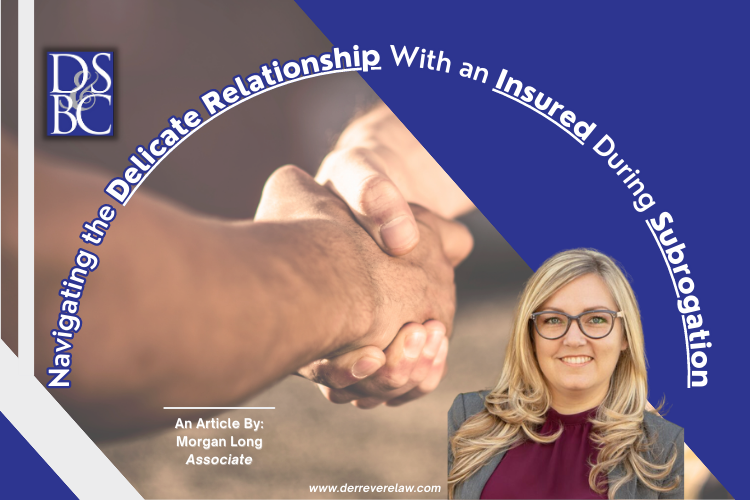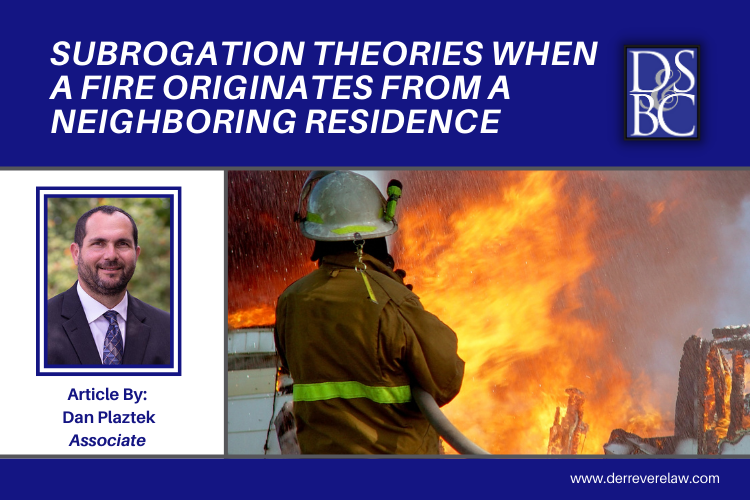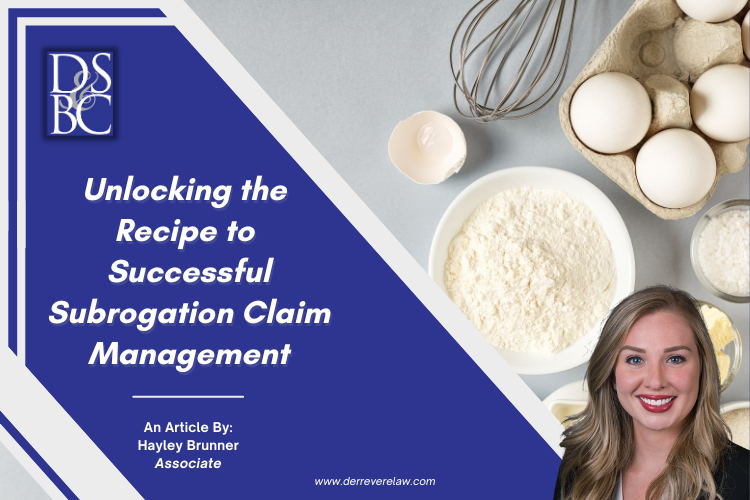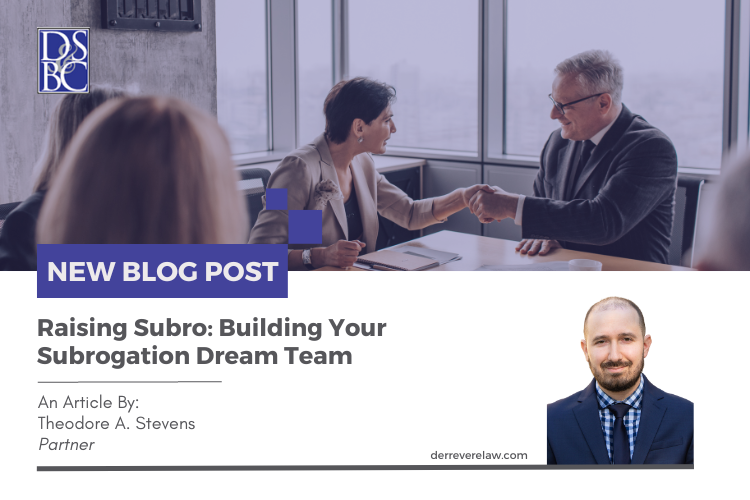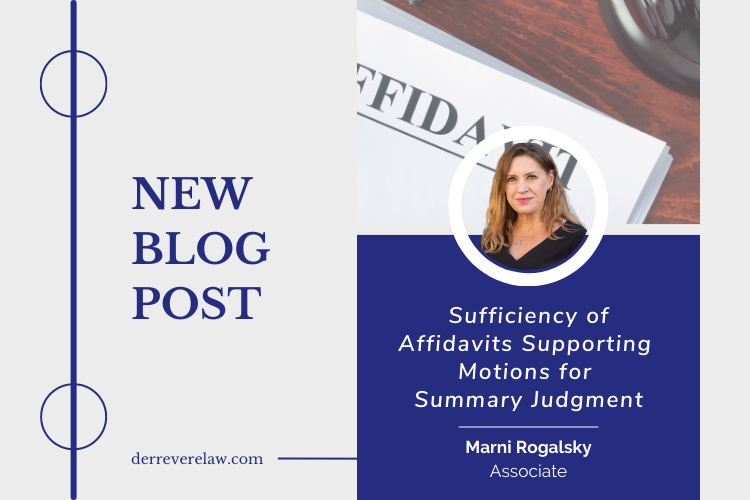August 31, 2023
The State of the Statute of Repose in the State of New York
New York is famous for not having a Statute of Repose of any sort. For the purposes of this discussion, a Statute of Repose bars a claim against design professionals and contractors after passage of a certain amount of time from project completion. This is different than a Statute of Limitations, which sets a deadline to commence a lawsuit measured from the time of the loss or injury. The rationale behind the Statute of Repose is to allow design professionals and contractors to put a project to rest, at some point. For example, if doors are jammed 25 years after construction, the owner should not be able to make a claim against those that did the design and construction of the entire building. New York and Vermont are the only two states remaining with no Statute of Repose.
Under the current law in New York, contractors and design professionals are exposed to claims for personal injury and property damage resulting from construction defects for an unlimited number of years after a project is completed. New York Civil Practice Law and Rules (“CPLR”) Section 214-d is sometimes referred to as the mini-Statute of Repose. Section 214-d requires wrongful death, personal injury, and property damage claimants to serve design professionals with a written notice of claim, at least ninety days prior to commencement of a lawsuit, when the design or construction work was completed more than ten years prior to the date of the claim. Failure to serve the notice sets the stage for a motion to dismiss pursuant to CPLR § 3211(h) or CPLR § 3212(i). If the defendant can show that more than ten years have passed since the project was completed, and no notice was served, the case will be dismissed. See, Dorst v. The Eggers Partnership, 265 A.D.2d 294, 696 N.Y.S.2d 478 (2 Dept. 1999). This mini “Statute of Repose” is something of a joke. Among other things, even if a claim is dismissed for failure to serve the ninety-day notice, all that the claimant needs to do is serve the notice and start a new action.
New York is revered to be the financial capital of the world, as well as a center of art, fashion, music, theater, media, innovation, and progress. As the law is currently written, design professionals and contractors in New York are subject to claims for an indefinite period of time. After 10 years a claimant must serve a notice, but this could be 20, 30, 50, or more years after the project is completed. This creates a lot of uncertainty for design professionals and contractors and their liability insurers. This must be balanced against the need and expectation by building owners and the public that buildings remain safe and usable structures beyond the 10 years or less that most other states have adopted for their statute of repose.1
The design and construction communities in New York have been lobbying for a Statute of Repose for many years, and now there are bills pending in the New York State Assembly and Senate to repeal CPLR § 214-d in its current form and replace it with a 10-year Statute of Repose for personal injury, wrongful death, and property damage claims asserted against design and construction professionals. In this regard, the Assembly’s Standing Committee on Higher Education and the Senate’s Judiciary Committee, each have been considering a bill (Assembly Bill A35952 and Senate Bill S412723) to impose a limitations period of ten years after the completion of improvements to real property. The bill has had no action for more than a year. A primary motivating factor for the bill, cited by the New York Legislature, is that the purpose of the bill is to curb the continuing rise in insurance premiums by bringing certainty to the scope of post-operational risk to which design professionals and contractors are exposed. In an effort to be fair, each bill provides for a one-year extension to serve a notice of claim, which accrues during the tenth year after the completion of the improvements.
In New York, and even more so in New York City, buildings are expected to last 50 or more years. We do not want the facades of 20-year-old buildings falling to the sidewalk with no recourse to the designers and builders responsible for the failure. We do not want a fire sprinkler main line to fail causing millions of dollars in property damage and endangering the lives of thousands of people.
1A table of the various statutes of repose in the 50 United States can be found here
2The text of the proposed Assembly Bill can be found here
3The text of the proposed Senate Bill can be found here
August 14, 2023
Waiving Consequential Damages – The Struggle Continues
Consequential damages waiver clauses are found in almost all standard construction industry contracts. Not surprisingly, parties want to avoid the economic impacts of unforeseen consequences. Yet all too often, we find ourselves litigating over the enforceability of consequential damages waivers because the confusion about these clauses is so widespread. Why are these boilerplate standard waivers so problematic? The two main reasons are: 1) nobody can agree on what consequential damages are; and 2) the consequential damages waivers are often ambiguous.
So, what exactly are consequential damages? The term seems pretty straight forward, but if you’ve been an attorney long enough, you know that very little is black and white. We are experts at navigating gray areas, and, as if to recognize the need for guidance, Florida courts provided us with a roadmap to assist us in analyzing damages by dividing them into 3 categories: general, special, and consequential.
General Damages
General damages are those which naturally flow or result from the injuries alleged. They are commonly defined as those damages that are the direct, natural, logical, and necessary consequences of the injury. For example, let’s say Bob hires Joe to repair his AC unit and pays Joe $3,000 in exchange for Joe’s performance of the repair. If Joe breaches the contract by failing to repair the AC unit, Joe owes $3,000 to Bob in general damages.
Special Damages
Special damages are monies that will compensate a plaintiff for damages that do not normally result from a breach. To recover special damages, the plaintiff must prove that when the parties made the contract, the defendant knew or reasonably should have known of the special circumstances leading up to such damages. They consist of items of loss that are peculiar to the party against whom the breach was committed and would not be expected to occur regularly to others in similar circumstances. Let’s take things a little further in our example above with Bob and Joe. Bob told Joe that he needed his AC unit to be repaired because his grandmother who lives out of state planned to visit him next week and could not stay at his home if the AC was not working. Joe told Bob the repair would be simple and could be completed in a few hours on Monday morning. Monday morning just so happened to be the day that Bob’s grandmother was to arrive. Joe breached the contract by failing to perform the repair, and Bob had to pay for his grandmother to stay in a hotel during her visit. The cost of Bob’s grandmother’s hotel stay would be considered special damages because the loss is peculiar to Bob and his circumstances.
Consequential Damages
The distinction between consequential damages and general damages lies in the loss incurred by the non-breaching party in its dealings with third parties. “Consequential damages do not arise within the scope of the parties’ transaction, but rather stem from foreseeable losses incurred by the non-breaching party in its dealings, often with third-parties, such as costs of repair.” In Keystone Airpark Authority v. Pipeline Contractors, Inc, 266 So.3d 1219 (Fla. 1st DCA 2019), the First District relied on several cases throughout the country that illustrated the differences between consequential damages and general damages. In Urling v. Helms Exterminators, Inc., 468 So.2d 451 (Fla. 1st DCA 1985), the First District found that the cost to repair extensive termite damage to a home purchased after a termite inspection company erroneously certified that the home was free of damage constituted consequential damages, whereas the cost of the termite inspection constituted actual damages. The Eastern District of Virginia found that a property owner’s cost to correct structural defects that resulted from defective plans prepared by an architect constituted consequential damages. The Eastern District of Virginia also found that the cost to repair a leaking roof caused by an architect’s defective plans constituted consequential damages. While the differences among the three categories of damages may not be clear cut, Keystone provides a general framework that serves as a helpful guide.
How can a consequential damages waiver clause be ambiguous? Florida Courts allow parties to limit their remedies, including their liability for consequential damages so long as the terms of the contract are clear and unambiguous. Courts have found consequential damages waiver clauses to be ambiguous and unenforceable when the clause’s language was unclear as to the circumstances to which it applied.
Take the following example:
“Owner releases, and agrees that Contractor will not be held liable for any damages to the premises, nor for loss or damage, consequential, incidental or direct, including but not limited to any: theft, vandalism, wind; storm, rain, fire, flood; lightning strikes, force majeures; owner’s moving, eating or rental expense or income; disruption of services including utilities. In the event that any work performed by Contractor is wholly or partially destroyed or damaged due to theft, vandalism; wind; storm; rain; fire; flood; lightning strikes; force majeure or any other causes not under Contractor’s control, the loss shall be sustained by Owner and shall not be the responsibility of the Contractor.”
The contractor will argue that this waiver clause deals with two aspects of damages; 1) damage to the premises; and 2) damages to the contractor’s work. The first sentence arguably means that the contractor is not liable for any damages to the premises, regardless of whether those damages are considered direct or consequential and regardless of the source. The second sentence deals with damage to the contractor’s work and provides that the Owner will be responsible for the loss if the work is damaged by circumstances outside the contractor’s control. The owner, however, will argue that the waiver is ambiguous and contradicts itself.
Owner on the other hand, will argue that there is a direct conflict between the first and second sentence because the first sentence absolves the contractor from liability for damages to the property, while the second only absolves the contractor from liability in the event the damages to the premises are outside of contractor’s control, and that the “premises” arguably includes the contractors’ work.
Another example is:
“The Consultant and Owner waive consequential damages for claims, disputes, or other matters in questing arising out of or relating got this Agreement. This mutual waiver is applicable, without limitation, to all consequential damages due to either party’s termination of This Agreement.”
While this clause from the outset may appear to bar the Owner’s consequential damages claims against the consultant in a potential breach of contract claim, the second sentence calls into question the applicability of the waiver. The second sentence could be interpreted to mean that the only consequential damages that are waived are those that arise following termination. The clause’s ambiguity runs the risk of rendering it unenforceable.
You can avoid the consequential damages waiver pitfalls by: 1) educating yourself on what consequential damages are; 2) drafting well written clauses that are not potentially self-contradictory nor open to multiple interpretations; and 3) listing out the damages that are being waived, i.e. lost profits, increased labor and material costs, rental expenses, loss of use, etc. Acquiring a deeper knowledge and understanding of what consequential damages are will allow you to better draft an enforceable consequential damages waiver clause for your client’s benefit.
[1] Hardwick Properties, Inc. v. Newbern, 711 So.2d 35, 39 (Fla. 1st DCA 1998) quoting Hutchinson v. Tompkins, 259 So.2d 129 (Fla. 1972)
[1] Keystone Airpark Authority v. Pipeline Contractors, Inc. 266 So.3d 1219 (Fla. 1st DCA 2019) citing to Fla. Power Corp v. Zenith Indus. Co 377 So.2d 203, 205 (Fla. 2d DCA 1979)
[1] Hardwick Properties, Inc. v. Newbern, 711 So.2d 35, 39 (Fla. 1st DCA 1998) citing to Jonson v. Monsanto Co, 303 N.W. 2d 86 (N.D. 1981)
[1] Keystone Airpark Authority v. Pipeline Contractors, Inc. 266 So.3d 1219 (Fla. 1st DCA 2019)
[1] Keystone Airpark Authority v. Pipeline Contractors, Inc. 266 So.3d 1219 (Fla. 1st DCA 2019) citing to Urling v. Helms Exterminators, Inc. 468 So.2d 451 (Fla. 1st DCA 1985) and to Bartram, LLC v. Landmark Am Insurance Co., 864 F. Supp. 2d. 1229, 1240 (N.D. Fla. 2012)
[1] Keystone Airpark Authority v. Pipeline Contractors, Inc. 266 So.3d 1219 (Fla. 1st DCA 2019) citing to Fed. Reserve Bank of Richmond v. Wright 392 F. Supp. 1126, 1131 (E.D. Va 1975)
[1] Keystone Airpark Authority v. Pipeline Contractors, Inc. 266 So.3d 1219 (Fla. 1st DCA 2019) citing to McCloskey & Co., Inc. v. Wright, 363 F. Supp. 223 (E.D. Va. 1973)
[1] Amoco Oil, Co. v. Gomez, 125 F. Supp. 2d 492 (S.D. Fla. 2000)
[1] Orkin v. Montango, 359 So.2d 512 (Fla. 4th DCA 1978).
July 31, 2023
Attention to the Details Makes or Breaks The Case
By now most lawyers have come to recognize that Florida’s summary judgment standard mirrors the Federal standard. This generalized view, however, overlooks important and distinct procedural aspects of Florida Rule 1.510 (c)(5). Unlike its Federal counterpart, the Florida rule requires the nonmovant party serve a Response to a Summary Judgment Motion at least 20 days prior to the hearing. The Response must include the nonmovant party’s supporting factual position backed by the record evidence.
Florida Courts have applied the mandatory requirements set forth in the Rule finding the failure to file a Response as detrimental to overcoming entry of Final Judgment. In Loyd S. Meisels, P.A. v. Dobrofsky, 341 So.3d 1131 (Fla. 4th DCA 2022), a dog owner sued an animal hospital and veterinarian to recover $6,355 in charges for a CT scan allegedly not performed. In granting summary judgment in favor of the dog owner, Judge Hurley found the facts were undisputed based upon the filings and affidavit submitted by Dobrofsky. Because the nonmoving parties never responded to the motion, the evidence remained unrefuted. Judgment was entered accordingly. The Fourth District affirmed observing that “Rule 1.510 (c)(5) states that the nonmovant must serve a Response; there is no wiggle room in the word ‘must.’ The mandatory requirement of a Response reduces gamesmanship and surprise to allow for more deliberative consideration of summary judgment motions.”
Case development along with knowledge and compliance with the Rules leads to positive results. Summary Judgment Motions prepared by the lawyers of DSBC are supported by strong record evidence and sound legal authorities. Our attorneys pay attention to the details. The mandates of the Rules are always the starting point to success.
July 17, 2023
Does Fla. Stat. 768.0427 Apply to Medical Damages Presented to the Jury in Lawsuits Filed Before March 24, 2023?
DSBC Associate Katie Hinkle explores whether or not Fla. Stat. 768.0427 applies to medical damages presented to the Jury in lawsuits filed before March 24, 2023.
July 3, 2023
Navigating the Delicate Relationship With an Insured During Subrogation
DSBC Associate Morgan Long explains how to navigate the unique relationship with the insured during the course of a subrogation claim.
June 20, 2023
Subrogation Theories When a Fire Originates From a Neighbor’s Residence in Florida
Florida allows subrogation recovery for damage due to the spread of fire from a neighboring property. Discover three strategies that can be employed when attempting to develop a theory of liability.
June 5, 2023
Unlocking The Recipe to Successful Subrogation Claim Management

As a professional cake artist and baker turned attorney, I like to think of a successful subrogation claim as a perfectly constructed recipe. Some may think that overlooking the smallest detail is immaterial. However, if you forget a teaspoon of baking powder in your beautiful pound cake, the consistency will become heavy, grainy and unappealing. Claims management is no different, and one small miss may be no less detrimental than that missing baking powder.

Properly constructing a subrogation claim is no different than baking that perfectly fluffy and flavorful cake. Just like managing a claim, I like to gather all of my ingredients before I begin measuring and mixing. Similarly, when a claim is first reported, it is crucial to gather all necessary information relating to what happened before, during, and after the loss. You will want to collect every single piece of evidence and facts surrounding the loss. Without doing so, you will likely forget one crucial ingredient necessary to your recipe.
Let’s imagine we’re making a carrot cake. There are so many possibilities of what could be included – do you want raisins or nuts in your carrot cake? Maybe you also want to add some pineapple…I’m just saying, don’t knock it until you try it. Like carrot cake, there are several potential ingredients, or parties that may be to blame for the loss. This is why it is so important to gather every fact and get your insured or client on the phone. In many instances of vehicle fires, it is assumed there is a manufacturing defect; however, without first gathering all of the facts, you may miss that the insured recently had an oil change or repair done by a third-party company. This information will not only be helpful in knowing who to put on notice for any examinations, but also to provide your expert with that golden nugget of information that may lead them to a strong finding and opinion.
In addition to gathering all the facts, you want to ensure that all necessary documents are collected as soon as possible to prevent them from being lost. This may include condominium bylaws, contracts, or invoices/receipts from services. In some instances, these documents may include a limitation or complete bar on subrogation claims. A necessary document may also include a subrogation waiver, if required by the insured’s policy. At the beginning of claim handling, it is important to obtain a subrogation waiver from your insured. Some policies contain language whereby the assignment occurs automatically after any payment is made. Other policies require an additional step from the insured to affirmatively assign their rights to the carrier. Despite the insured having a legal obligation to provide the assignment if requested, it may take weeks or months to contact an insured, which may result in the statute of limitations running.
Just as important as gathering all ingredients, you want to avoid overbaking a cake. No one wants a burnt cake, right? Similarly, we don’t want to sit on a claim too long before gathering the evidence, providing notice to adverse parties, getting an exam performed, and retaining an attorney. The longer you wait to examine the evidence, the more likely it will be lost or tampered with, resulting in the integrity of your claim being compromised. Additionally, when it comes to negotiations, attorney involvement can place pressure on an adverse party and ensure a timely settlement. If we overbake a claim and do not involve an attorney within a reasonable time before the statute of limitations runs, the ability to negotiate may be negatively affected.
Like overbaking a cake, underbaking can be equally detrimental. So, when is the right time to send a pre-suit demand? It is never too early to serve a contractor with notice of a potential claim. Chapter 558 of the Florida Statutes provides a notice requirement for all construction defect cases. You must provide a contractor with notice via certified mail and an opportunity to inspect and fix the alleged defect. Failure to do so may be detrimental to your case. As to other claims, presenting a claim to an adverse party without proof of payments, invoices, pictures, and potentially expert reports will result in an early denial that may be difficult to have reconsidered.
If your claim is denied and the question is whether to close it out, file arbitration, or file suit, ask yourself if placing this case into trial is worth the risk of not settling with the offer on the table. You may have a family recipe for brownies and come across a new recipe that is fudgier and more chocolatey than your family recipe. Know when to toss that old recipe and replace it. Don’t become so attached that you sacrifice your great baker reputation! Some claims are better than others, if the facts and evidence aren’t there, it may be time to close it out and move on to better and tastier things.
May 22, 2023
Raising Subro: Building Your Subrogation Dream Team
Achieving success in the subrogation field is largely dependent on the team of subrogation professionals and/or attorneys that you assemble. The two simple, yet critical elements to building your subrogation dream team are hiring the right people for the job and raising them to be stars of your team. Every employer has different criteria that they use to help determine the best employee to hire. Most will focus on pedigree and experience in the subrogation field. Employers feel more comfortable hiring an employee who has previously worked in subrogation as they feel they will most likely be easier to train and start producing results sooner. However, if you hire the right kind of employee and have an established training program for your subrogation team, prior subrogation experience is not necessarily a requirement.
The three essential traits of a great subrogation hire are someone who is trainable, has a compatible personality, and is a team player. Determining if a potential hire is trainable is key to their long-term success on your team. Whether it’s a 20-year seasoned veteran of the subrogation industry or a green adjuster/attorney that has no clue as to what subrogation means (outside of their quick Google search of the term in preparation for their interview), finding someone who has the willingness to learn is highly important. Teaching a new subrogation hire takes time and requires the new employee to have the patience to start from the basics and gradually learn the process. If the new hire is unwilling to learn your group’s subrogation process and listen to constructive criticism of their supervisors, then this can
substantially hurt the chances of the employee becoming an effective member of the team.
Hiring an employee with a compatible personality is one of the most important attributes but is probably the most difficult to attain. Your current team’s culture will determine which type of personality you are looking for. You want a new team member that will fit in with your current group and bring something new to the table. For example, our subrogation group at DSBC consists of a diverse set of personalities and people but the common theme is being a “good” person and team player. We spend so much time with our work family that you want to enjoy who you are spending your time with. This starts with people who prioritize respect. All members of the team are required to treat each other with respect. Whether senior management or a new intern, all teammates must respect one another. Here at DSBC, we also adhere to the work hard/play hard mentality. Hitting your recovery goals takes an immense amount of grinding and effort throughout the year. However, there is no reason why your team cannot have fun while working through the grind. Find team members that have enthusiasm, charisma, and are enjoyable to work with. If your new employee’s personality fits in with your team, then you are more likely to avoid unnecessary office drama and they will improve your team’s work environment.
The last essential trait for a new member of the team is being a team player. Hitting your subrogation recovery goals takes a village. Every member of your team needs to be invested in helping, however possible, to achieve your goals. Whenever an issue/challenge arises, all team members need to be ready and willing to assist. If team members are solely focused on their own recovery numbers, then it can hurt your team’s morale and your ability to achieve the group’s recovery goal. Being a good team player also involves checking your ego at the door and being willing to assist in any task whether it’s big or small. When selecting your new employee, focus on whether they are going to be a willing helper regardless of the task.
The last step to building your subrogation dream team is building an established training system to put your new hires in the best position to succeed. First and foremost, having supervisors and senior members of the group spend time with the new employees is essential to your training system. Your senior members of the team are your best assets in training your new teammates. This obviously requires your senior members to be willing to commit some of their work time to training but the eventual rewards are more than worth it. One of the best tools for training is observation. Trainees learn best when they can observe other members of the team while they are handling their daily duties. Whether its new attorneys shadowing senior attorneys in depositions, mediations, and hearings or subrogation professionals bringing new hires onto their phone calls to observe, this type of experience is essential in training your new employee and also showing them the culture of your group. Another key training tool is making all members of your team accessible to the new employees for questions. The different members of the team can pass on different lessons and strategies to help the new teammate build their own work routine. Making sure that you have an open-door policy for the new employees is extremely helpful in ensuring they feel comfortable enough to ask questions. Lastly, empowering your new employees is key to them becoming self-sufficient and effective members of your team. Constructive criticism is part of any good training system but building up your new employee’s confidence is important as well. When mistakes are made by a new employee, it is important to focus on finding a solution and using the experience as a teachable moment for them. When new team members accomplish tasks, make sure the senior members of the team take time to show praise as well. Instilling confidence in your new employees will help produce more competent and self-sufficient members of your team.
Building your dream subrogation team is a combination of finding the right teammates and providing them the proper training to succeed. While prior experience in the subrogation field is certainly helpful, it does not need to be a prerequisite to hiring a new member of your subrogation team. As long as you prioritize the compatible personality traits that fit your group in the hiring process and develop an effective training system, you can continue to grow and strengthen your subrogation team.
May 8, 2023
When it Comes to Indemnification in Construction Contracts, the Sky is NOT the Limit
Succeeding on a common law indemnity claim can prove to be difficult, if not impossible, for a general contractor seeking indemnification from a subcontractor. DSBC Partner Hillarie Miller discusses the limits of indemnification in construction contracts.
April 24, 2023
Sufficiency of Affidavits Supporting Motions for Summary Judgement
Motions for Summary Judgment are a useful tool for insurance companies to have a Court rule on issues in a case as a matter of law before those issues are presented to a jury. DSBC Associate Marni Rogalsky breaks down its use in the context of defending first-party property cases.


